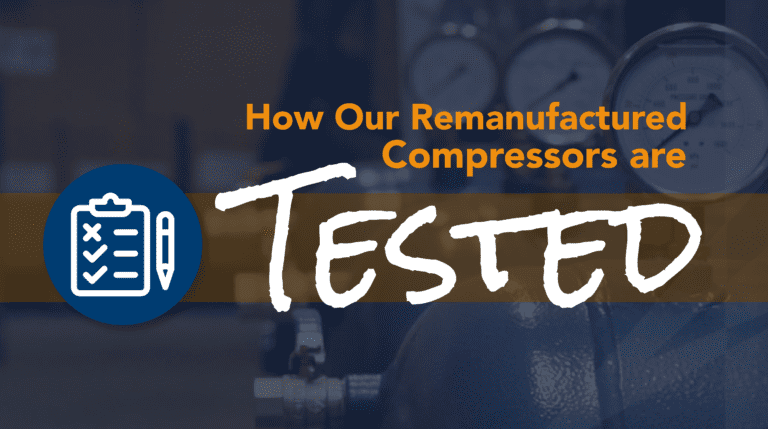

Remanufactured compressors are special because they are expected to meet original manufacturer specifications. Unlike refurbished compressors, they must be as close to perfect as possible, before they leave the warehouse and ship to a customer’s location. As you can imagine, this means that they need to undergo extensive testing and inspections so that they will perform like new. To achieve this result, rigorous testing standards have been put forth, using specialized tools that are designed to mimic real-world operating conditions, to give us the best idea of what we can expect from each compressor. Here’s what that looks like when it’s broken down:
Individual Parts Testing and Inspection
When an old compressor is received, the very first thing we do is tear it all down, and clean all of the parts to remove any grease or oils that may be on them. From there, these parts are carefully inspected and measured for any signs of wear or damage. Commonly wearable parts are replaced automatically because we don’t want to take any chances.
Assembly
After the individual parts have passed muster, they are assembled back inside the compressor case along with any new replacement pieces that are needed. The assembly is then bolted or welded shut, depending on the type of compressor that we are working with. When the compressor has been fully assembled, it must be pressure tested first, to ensure that there are no leaks which might prevent it from reaching its regular operating pressure. This also allows us to inspect the weld for any signs of weaknesses.
Test Run
To protect the compressor motor, we make sure to do a short test run on the unit, monitoring the temperature, oil pressure, voltage, and amperage, among other things. This first test allows us to verify that all of the components are working together as expected. If there are any signs that these numbers are not reaching their expected values, we can stop the test and inspect before any real strain is placed on the system. These numbers are charted so that we can compare them to the expected values of a brand new compressor straight out of the box. The remanufactured unit must perform on par with a new unit to pass the test.
When the final test run is complete, the compressor is given the quality control stamp of approval, and documentation is created to ship with the commercial compressor, certifying it has met all expectations. Furthermore, this documentation is proof of the compressors coverage for any warranty claims that may be made in the future.
As you can see, remanufactured commercial compressors undergo stringent testing and an inspection processes to provide customers with the most reliable products possible. This is why it’s important to make sure that you are buying your compressors from trusted remanufacturing companies who do more than just replace parts and stamp a date on the unit. To learn more about our commercial remanufacturing process, contact us today.












